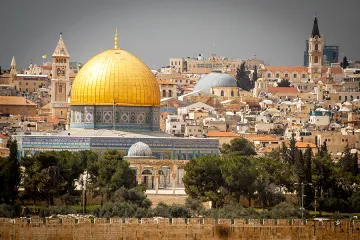Rome Newsroom, Apr 7, 2023 / 06:00 am
In the late summer and fall of 2016, central Italy was devastated by several powerful earthquakes.
Numerous historic churches and buildings were destroyed in the quakes — including one of the oldest monastic complexes in Italy, the Abbey of Sant’Eutizio, whose bell tower and church roof collapsed.
One of the Benedictine abbey’s artworks, a crucifix painted by Nicola di Ulisse da Siena around 1472, was shattered into at least 30 pieces in the rubble.
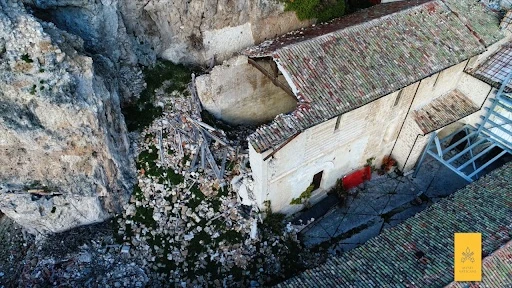
The fragments of the cross, which had hung above the altar of the abbey church, were recovered weeks later by firefighters and a team of art restorationists from the Vatican.
Barbara Jatta, the director of the Vatican Museums, told EWTN News the restoration of the cross was not an ordinary project for the museums, which is usually busy restoring, cleaning, and maintaining the thousands of works in its own collections.
“But this was a special occasion and really was the will of Pope Francis,” she said.
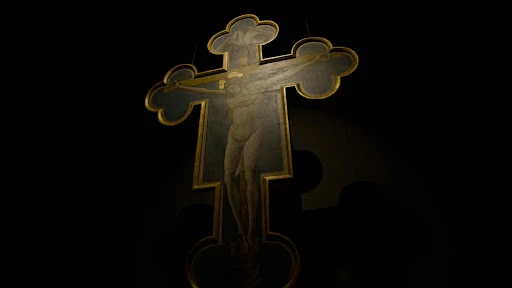
A team in the Vatican Museums’ painting and wood restoration laboratory worked on the cross since 2018.
The work is now part of a temporary exhibit in the Vatican Museums, “Fragments of Hope,” recounting the story of the crucifix’s destruction and restoration.
The cross will be returned to the people of the Archdiocese of Spoleto-Norcia this summer and displayed in the diocesan museum. The reconstruction of the abbey began in September 2022 and will take several years to complete.
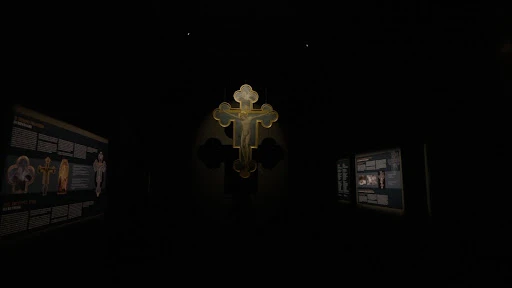
Anna Pizzamano, an expert in Medieval art, told EWTN News the restoration of the cross was an incredible feat, since not all of the pieces were able to be recovered from the church rubble.
“A real miracle materialized, why? ... The restorers were able to reconstruct the whole cross,” she said.
She noted that the artwork is “one of a kind” and that few paintings by the artist Nicola di Ulisse da Siena remain today.
“Not having a work like the Cross of Sant’Eutizio would have been a dramatic loss,” she added.
(Story continues below)
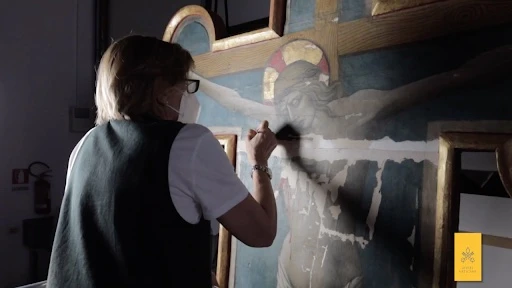
She pointed out the imagery of the pelican depicted at the top of the crucifix: “Here is the living and present body of Christ, which is symbolized by this pelican.”
“Of course, the cross, among all the symbols, remains the symbol par excellence, the most important sign that characterizes our faith. It is not just something that hangs from our neck or we are used to seeing, it is the deepest sign of our faith,” she said.
Pizzamano helped curate the “Fragments of Hope” exhibit, which opened last month.
The Cross of Sant’Eutizio is a symbol of hope for the people of Umbria, who have experienced devastating earthquakes, the COVID-19 pandemic, and personal difficulties, she said. “The hope is that of Christ overcoming death going into Easter.”
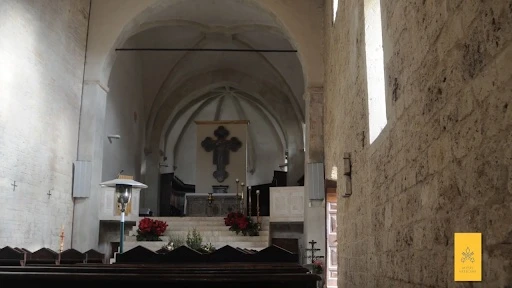
The art historian said the Vatican Museums decided to ask the archbishop of Spoleto-Norcia to compose a prayer for the unveiling of the restored cross.
“It is a prayer which illustrates precisely the confidence, the hope, and the joy of not only having recovered a work of art of this hue but also a symbol of hope for all the people hard hit by the earthquake,” Pizzamano said.
It is “all the more so in this important time of Lent, which sets us on the Easter journey,” she continued. “It is something that restores great peace, great consolation in people’s hearts, not only of those who have worked physically [on the cross’s restoration] but [also] of those who will soon be able to return to pray before this cross.”






